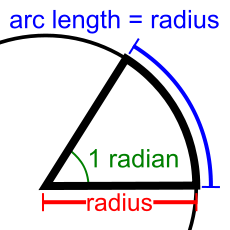Sidebar
Numbers, Angles, and Points
There are lots of ways to enter numbers, angles, and points in Rhino. The only hard and fast rule is that no spaces are permitted in a number, angle, or point.
Entering numbers
Basic numbers
123 whole numbers +123.456 decimal numbers 0.456 .456 -1.23456e10 scientific notation - 23456E10 5/16 fractions 1-3/4 (=1.75)
You can specify units when typing lengths and point coordinates. Rhino will automatically convert the number you type into the model's units. For example, if your model units are meters and you type 27cm, Rhino automatically converts your number to 0.27.
- 235millimeters
- 1.234cm
+16'5“ (16 feet 5 inches)
1'2-3/4" (1 foot 2.75 inches)
Entering angles
Note: Usually angles are preceded with a < symbol.
You can specify angles by typing a number. If no units are specified, then degrees are assumed.
45 (45 degrees)
There are six ways to specify degrees. You can type the ° symbol, but it is easier to just type a d. The reason multiple formats are accepted is to make life easier for people who cut and paste text from other programs.
45d 39deg 22.875degs 12.345e2degree 180degrees 47.653395° * There are 360 degrees in a circle
You can also use degrees-minutes-seconds format.
128d37'22" (128° 37 minutes 22 seconds = 128.622777...°) 99d37'45.234" 32.543' 32'30.1234"
Radians and grads are also supported.
3.1415926535897932384626433832795r (pi radians) - - 234rad - 234rads - 234radian - 234radians
4g 4grad 4grads * There are 400 grads in a circle
Entering points
3,4,5 x,y,z
2,-11 = (2,-11,0)
When you omit the z coordinate, it is automatically set to 0.
17<45 polar (radius<rotation angle) 17<45,8 polar (radius<rotation angle,z)
5<30<45 spherical (radius<rotation angle<elevation angle)
11<N30d22'54.43"W surveyor (distance<N/SangleE/W)
If you put a w in front of a point, then the point is in world coordinates. Otherwise it uses the construction coordinates of the active viewport.
w9,3,4 world x,y,z w78<32 world polar
Whenever there is a previous point known, as in the Polyline command, you can specify relative points.
r3,4 R3,4
